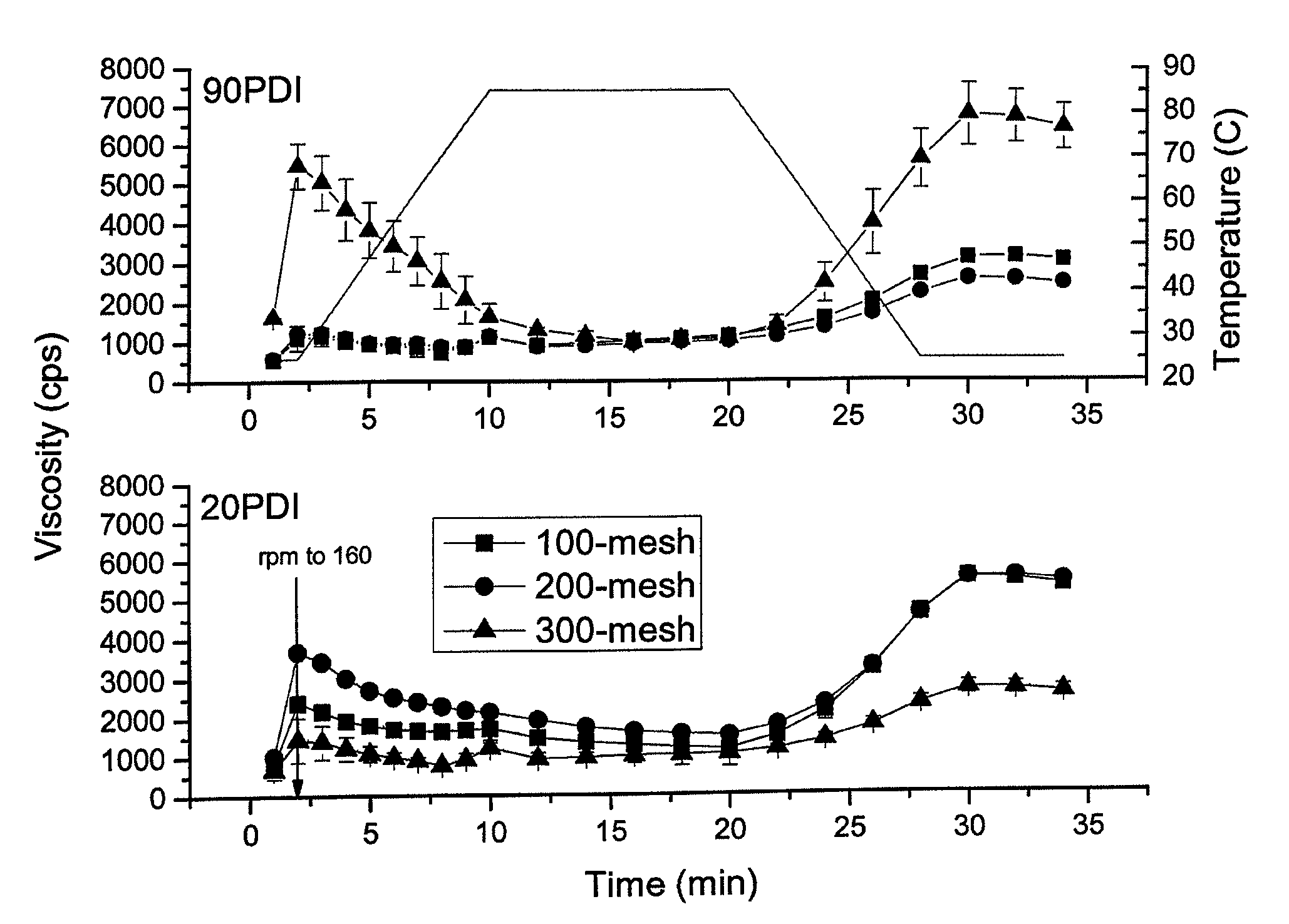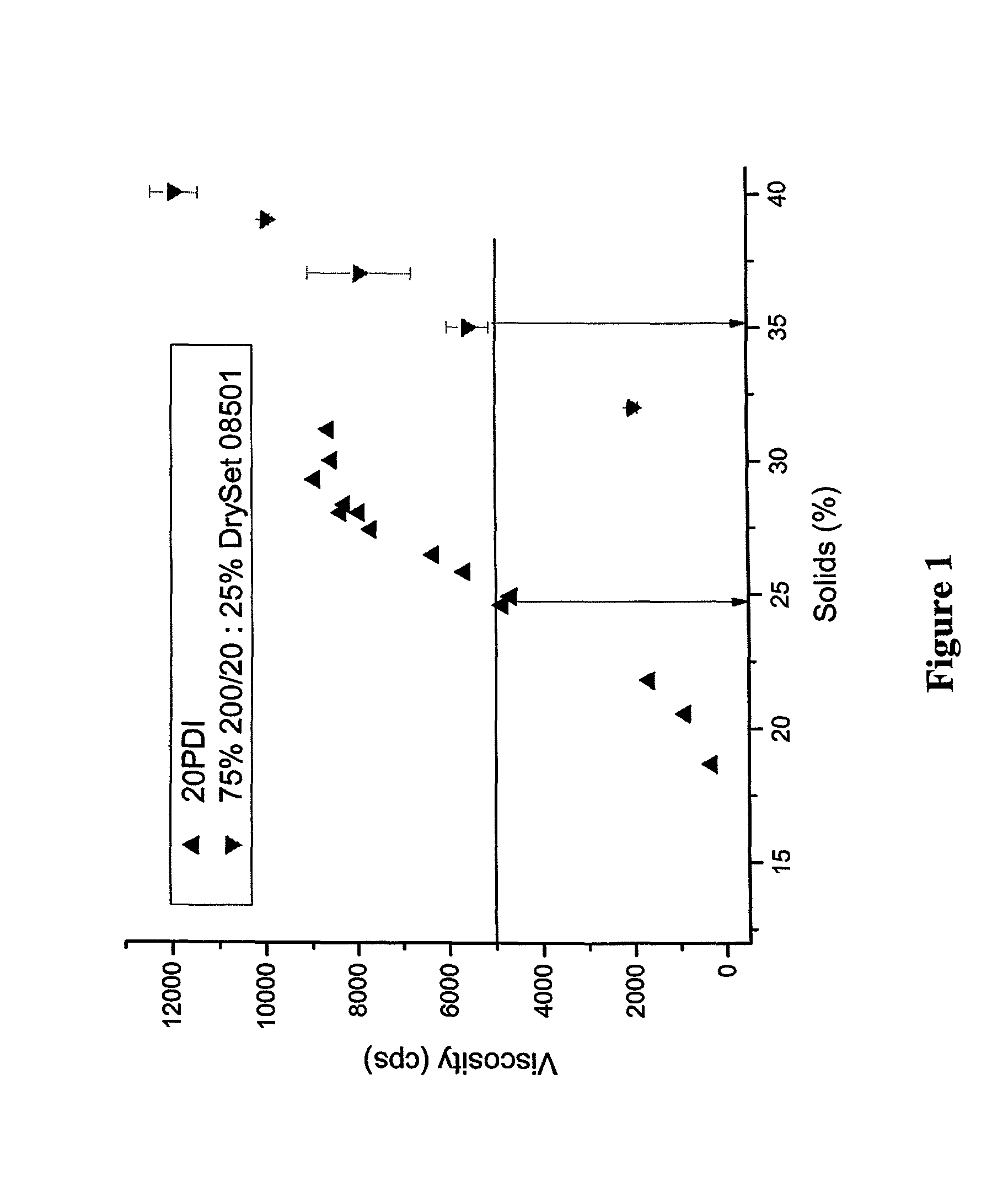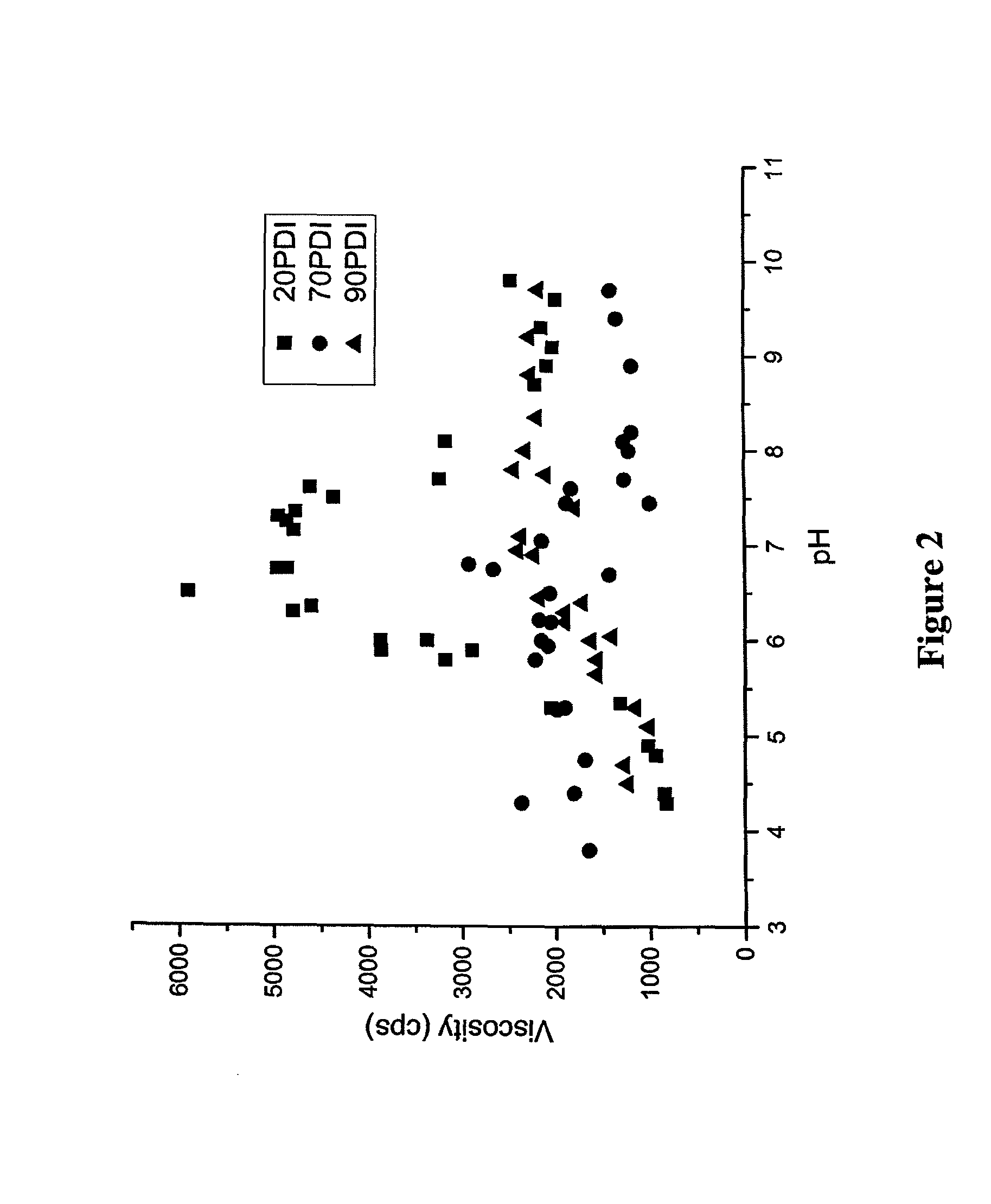Protein and starch compositions, methods for making and uses thereof
a technology of starch and composition, which is applied in the field of composition comprising a protein and a starch, can solve the problems of low dry binding strength of starch dextrins, inability to provide significant water repellency, and inability to bind proteins and synthetic latex
- Summary
- Abstract
- Description
- Claims
- Application Information
AI Technical Summary
Benefits of technology
Problems solved by technology
Method used
Image
Examples
example 1
Preparation of a 100% Soy Flour Protein Adhesive
[0081]In this example there was used Prolia 200 / 20 soy protein flour available from Cargill, Inc. 80 g of Prolia 200 / 20 was weighed into a plastic weighing boat on a top loading balance and the dry powder was added slowly with stirring to 195 mL of de-ionized water warmed in a metal beaker inserted into a hot water bath set to 53° C. This was mixed for 15 minutes. The protein paste product was then transferred to a sealable bottle and placed in a warm water bath at 50° C.
example 2
Preparation of 75:25 Soy Flour Protein and a Thermally Modified Dent Corn Starch Dextrin Adhesive
[0082]In this example there was used 200 / 20 Prolia soy protein flour and DrySet 08501 starch dextrin available from Cargill, Inc. 60 g of Prolia 200 / 20 and 20 g of DrySet 08501 were combined dry in a weighing boat. The protein-starch dry powder blend was added slowly with stirring to 195 mL of de-ionized water warmed in a metal beaker inserted into a hot water bath set to 53° C. This was mixed for 15 minutes. The protein-starch paste product was then transferred to a sealable bottle and placed in a warm water bath at 50° C.
example 3
Preparation of a 50:50 Soy Flour Protein and a Thermally Modified Dent Corn Starch Dextrin Adhesive
[0083]In this example there was used 200 / 20 Prolia soy protein flour and DrySet 08501 starch dextrin. 40 g of Prolia 200 / 20 and 40 g of DrySet 08501 were combined dry in a weighing boat. The protein-starch dry powder blend was added slowly with stirring to 195 mL of de-ionized water warmed in a metal beaker inserted into a hot water bath set to 53° C. This was mixed for 15 minutes. The protein-starch paste product was then transferred to a sealable bottle and placed in a warm water bath at 50° C.
PUM
| Property | Measurement | Unit |
|---|---|---|
| temperature | aaaaa | aaaaa |
| temperature | aaaaa | aaaaa |
| PDI | aaaaa | aaaaa |
Abstract
Description
Claims
Application Information
 Login to View More
Login to View More - R&D
- Intellectual Property
- Life Sciences
- Materials
- Tech Scout
- Unparalleled Data Quality
- Higher Quality Content
- 60% Fewer Hallucinations
Browse by: Latest US Patents, China's latest patents, Technical Efficacy Thesaurus, Application Domain, Technology Topic, Popular Technical Reports.
© 2025 PatSnap. All rights reserved.Legal|Privacy policy|Modern Slavery Act Transparency Statement|Sitemap|About US| Contact US: help@patsnap.com



